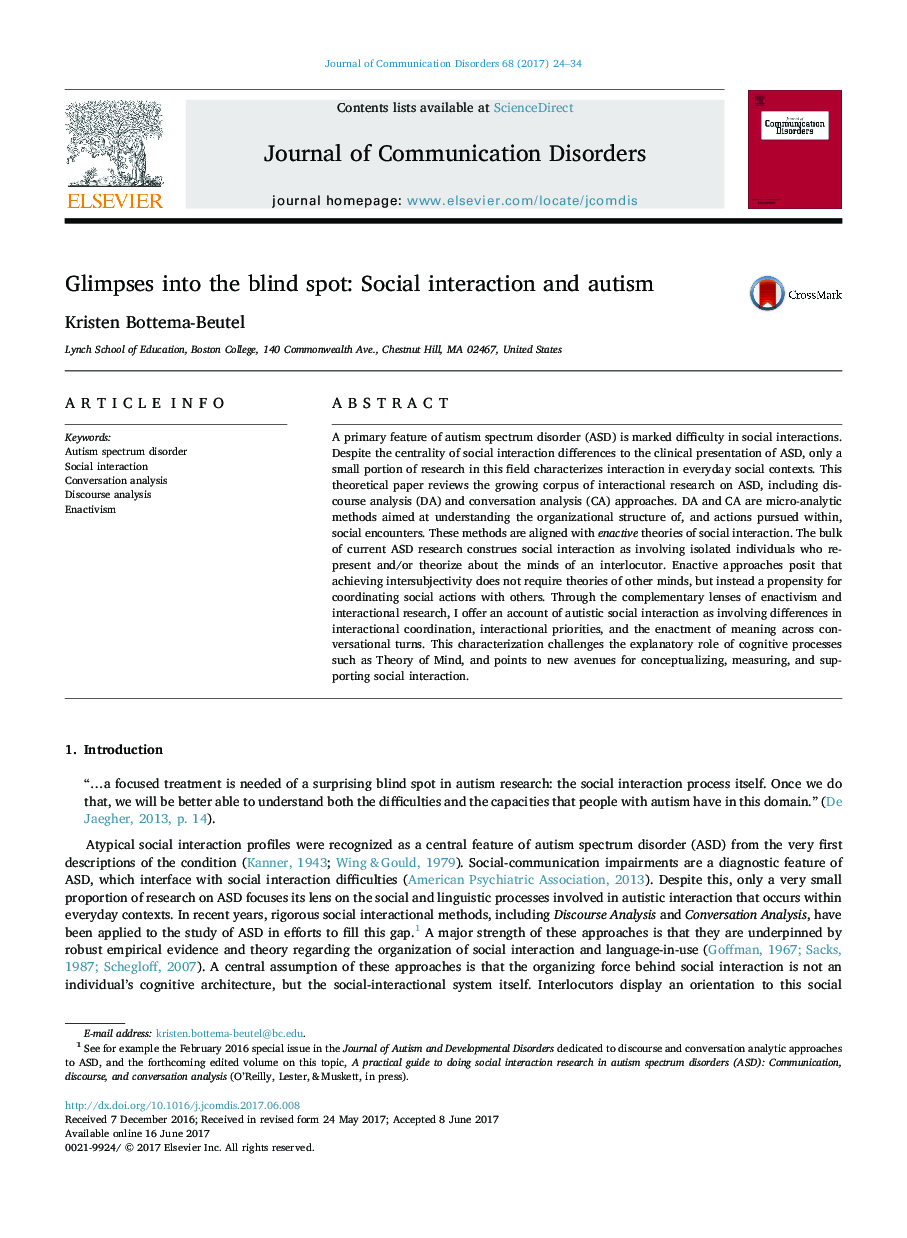| Article ID | Journal | Published Year | Pages | File Type |
|---|---|---|---|---|
| 5039113 | Journal of Communication Disorders | 2017 | 11 Pages |
â¢Social-cognitive accounts of ASD have limited utility for understanding interaction.â¢Enactive accounts may be a useful alternative.â¢Discourse and conversation analytic research is consistent with enactivism.â¢This review draws upon this literature to describe social interaction in ASD.
A primary feature of autism spectrum disorder (ASD) is marked difficulty in social interactions. Despite the centrality of social interaction differences to the clinical presentation of ASD, only a small portion of research in this field characterizes interaction in everyday social contexts. This theoretical paper reviews the growing corpus of interactional research on ASD, including discourse analysis (DA) and conversation analysis (CA) approaches. DA and CA are micro-analytic methods aimed at understanding the organizational structure of, and actions pursued within, social encounters. These methods are aligned with enactive theories of social interaction. The bulk of current ASD research construes social interaction as involving isolated individuals who represent and/or theorize about the minds of an interlocutor. Enactive approaches posit that achieving intersubjectivity does not require theories of other minds, but instead a propensity for coordinating social actions with others. Through the complementary lenses of enactivism and interactional research, I offer an account of autistic social interaction as involving differences in interactional coordination, interactional priorities, and the enactment of meaning across conversational turns. This characterization challenges the explanatory role of cognitive processes such as Theory of Mind, and points to new avenues for conceptualizing, measuring, and supporting social interaction.
